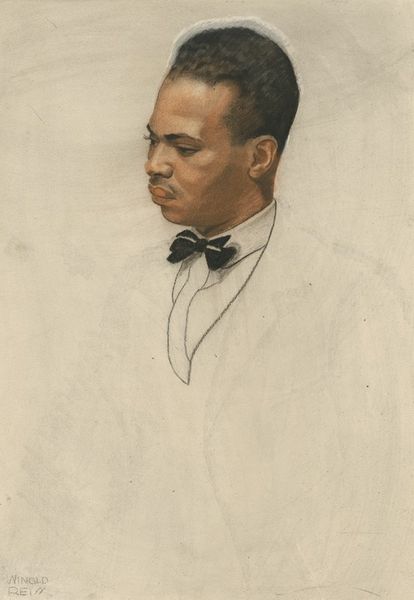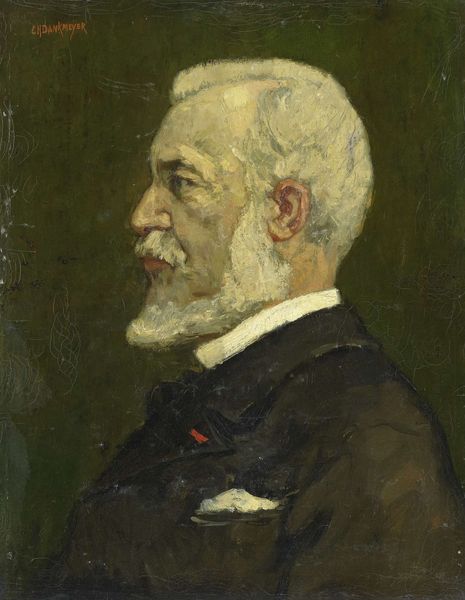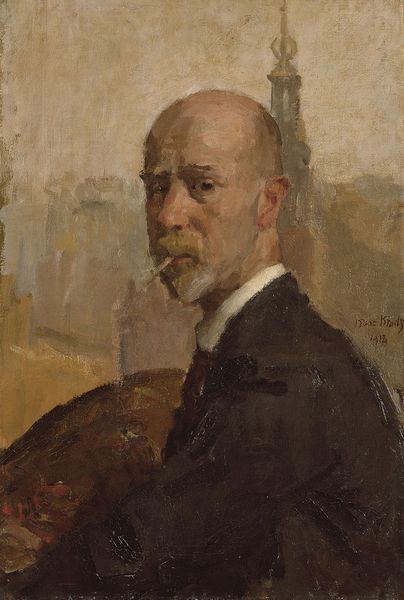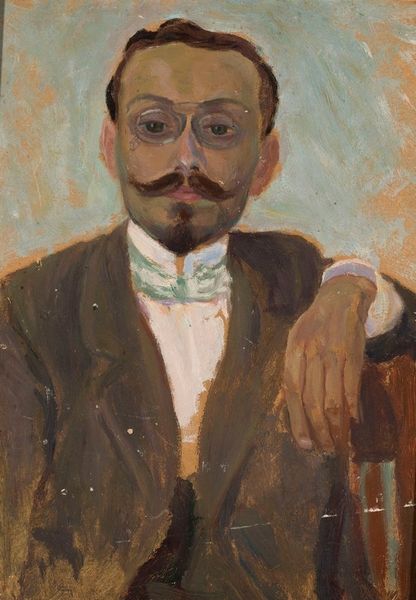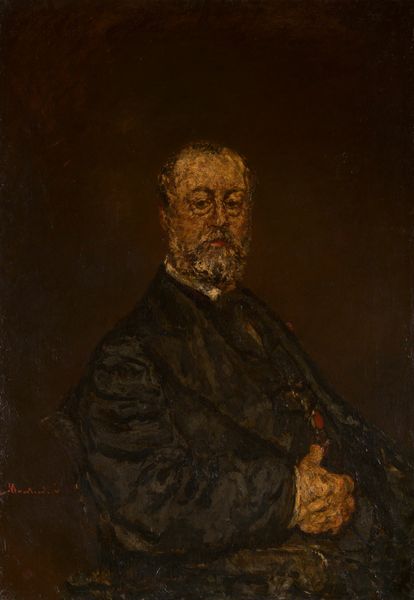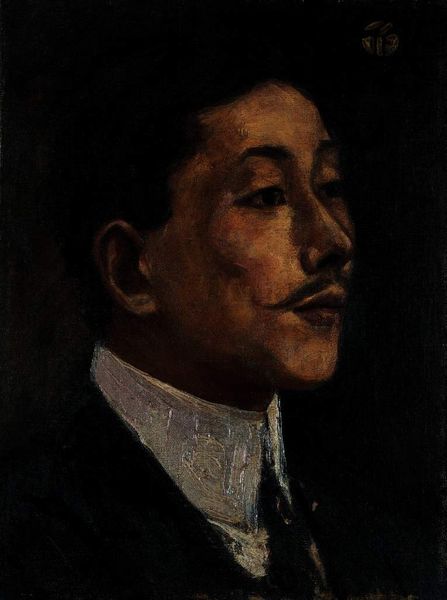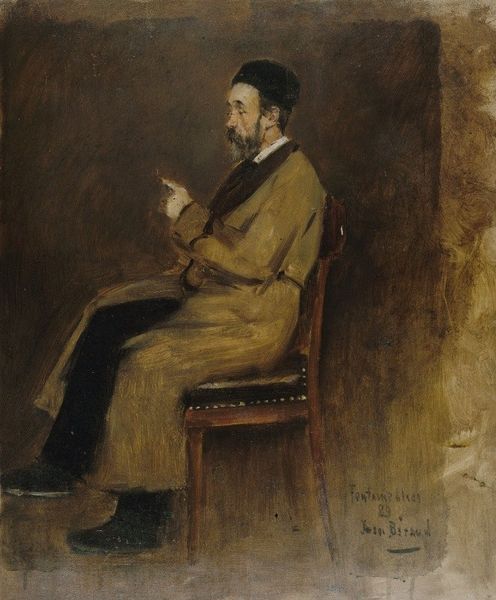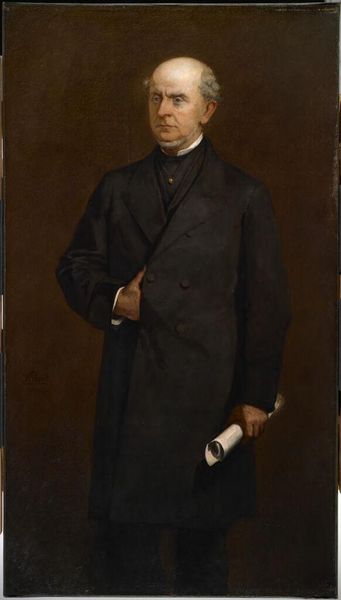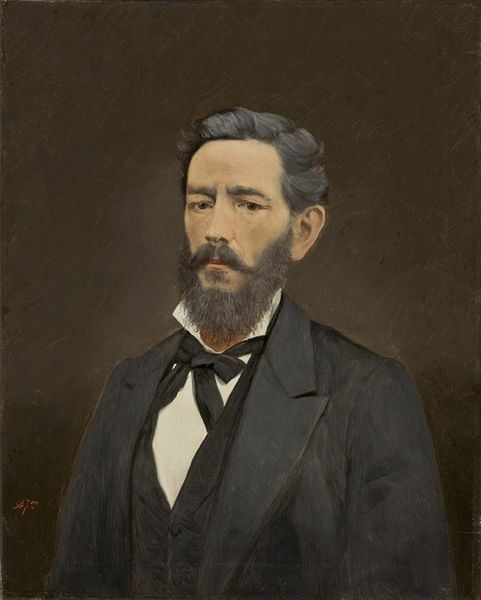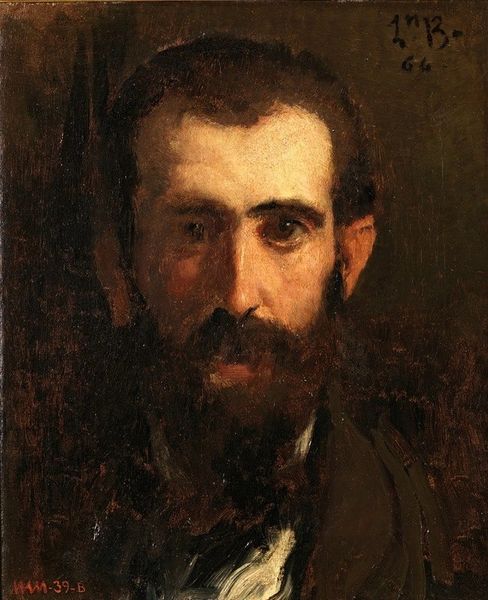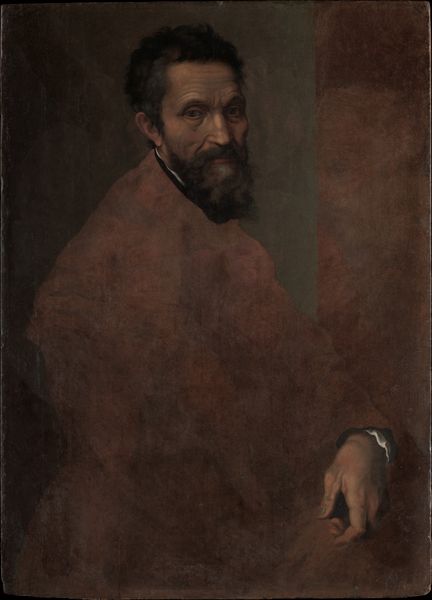
oil-paint
#
portrait
#
african-art
#
oil-paint
#
figuration
#
oil painting
#
portrait art
#
realism
Copyright: George Pemba,Fair Use
Curator: Up next we have George Pemba’s portrait of Reverend John Knox Bokwe, created in 1978 using oil paint. Editor: The dark, muted palette really sets a contemplative mood. There’s a softness in the handling of the paint, almost a quiet reverence. Curator: Pemba’s artistic choices regarding the materials speak volumes, don't they? The use of oil—a medium historically associated with formal portraiture—imbues Bokwe with a sense of dignity. This challenges the prevalent depiction, or lack thereof, of Black figures in the art world during that era. Editor: Absolutely. It also subtly acknowledges Bokwe's important position within society, considering he was a clergyman, composer, and journalist, all influential roles. How do you feel the social context affects your viewing of this work? Curator: Knowing Pemba's commitment to documenting everyday life and the struggles of Black South Africans under apartheid profoundly shapes my understanding. Oil paints would have been a costly choice. Was that deliberate for creating legacy and demonstrating reverence, rather than using readily available or inexpensive alternatives? I also want to know about the supplier, the pigment choices... Editor: Right, understanding Pemba’s practice and artistic goals helps interpret how the social and political landscape informed the narrative being represented. We also must think about where it would have been exhibited—whose eyes was it intended for, and how did that shape Pemba’s process? Was it shown in gallery spaces and, if not, how was the art circulating? Curator: I agree. There's also a tangible, material connection to the subject—the paper he holds, likely representing his work as a journalist and composer. The materiality signifies both cultural production and intellectual labor. It feels very tangible. Editor: Seeing the portrait in our modern space lets us rethink art’s role as a form of resistance against erasure within dominant historical narratives. What do you think its role is now? Curator: Looking closely at this portrait offers, to me, a way of seeing and honoring overlooked histories while also highlighting the skill of Pemba. I hadn’t quite pieced together how deeply both materials and institutions affect how we understand even the simplest image. Editor: It does, and this examination helps reveal a lot about Pemba's broader influence and intentions.
Comments
No comments
Be the first to comment and join the conversation on the ultimate creative platform.

